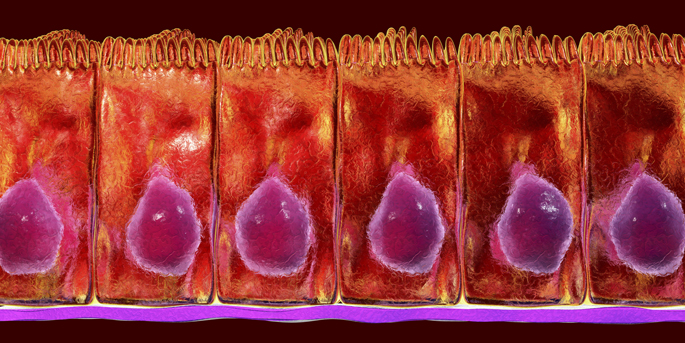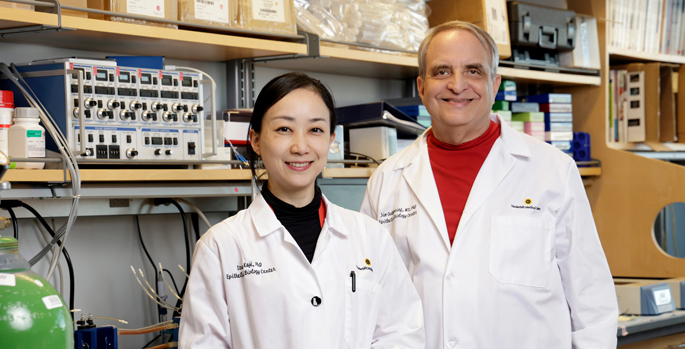Mutations in the gene MYO5B cause microvillus inclusion disease (MVID), which prevents nutrient absorption in the intestines and is characterized by severe watery diarrhea that typically starts in the first hours after birth. People with MVID usually require lifelong intravenous feedings (parenteral nutrition) or small bowel transplantation.
Izumi Kaji, PhD, and colleagues developed a mouse model of a novel patient-based MYO5B mutation — which they identified by targeted exome sequencing — to explore MVID pathogenesis. The researchers used transmission electron microscopy and multiplexed immunofluorescence staining to characterize tissue samples from the patient and mouse model. They reported in the journal Cellular and Molecular Gastroenterology and Hepatology that the model phenocopies the MVID patient.
The study shows that the novel mutation disrupts the microvillus structure of intestinal epithelial cells and suggests a defect in the maturation of these cells. The study also demonstrates a rapid strategy for establishing mouse models to study patient-specific mutations in monogenic disorders.
Andreanna Burman and Michael Momoh are co-first authors of the CMGH paper. Other authors include Leesa Sampson, PhD, Jennifer Skelton, Joseph Roland, PhD, Cynthia Ramos, Evan Krystofiak, PhD, Sari Acra, MD, MPH, and James Goldenring, MD, PhD.
The research was supported by the National Science Foundation, National Institutes of Health (grants DK128190, DK058404, DK118640, DK048370), American Physiological Society and Christine Volpe Fund.















